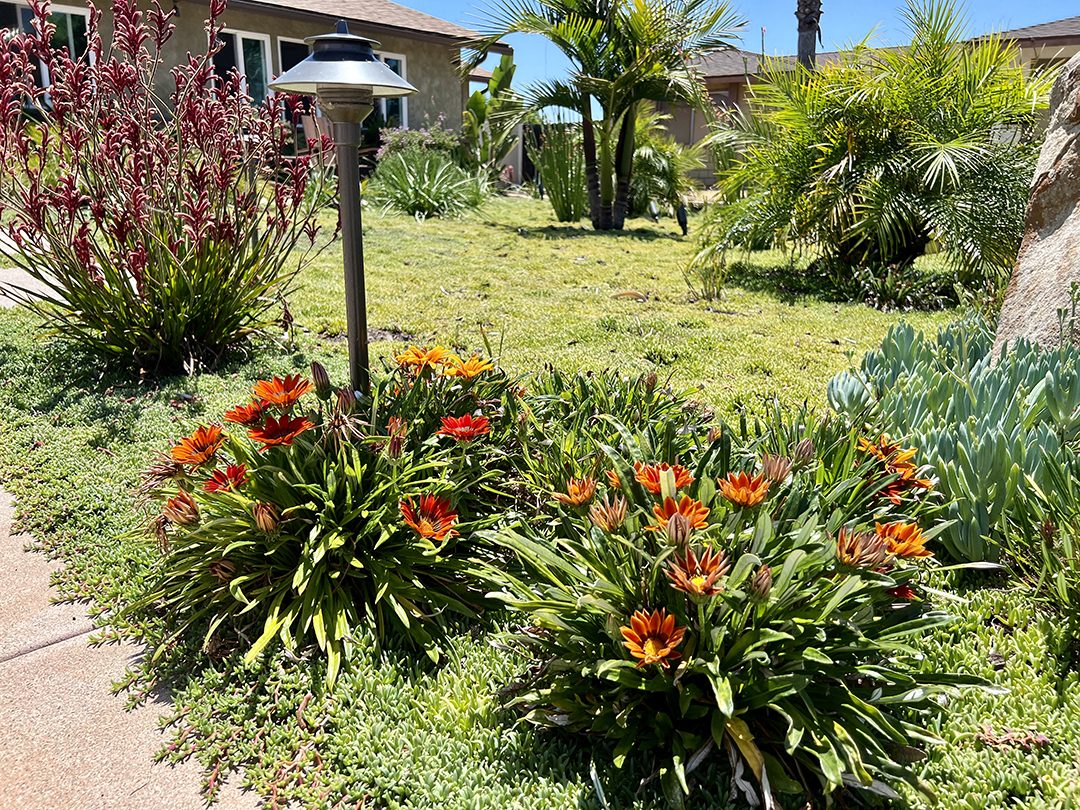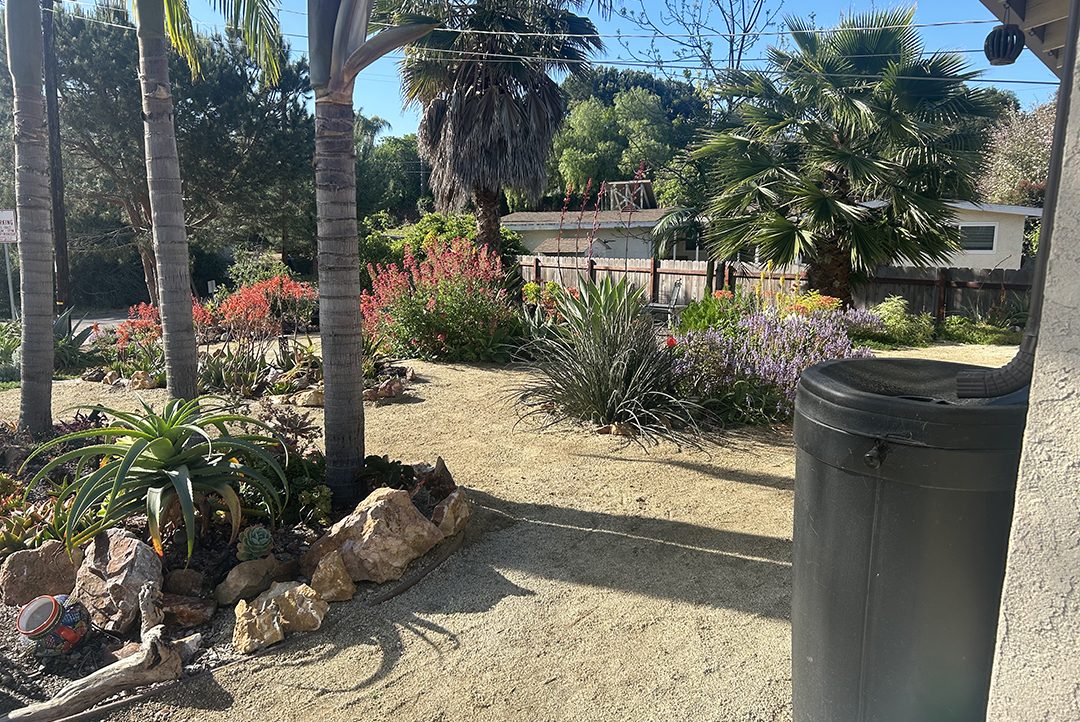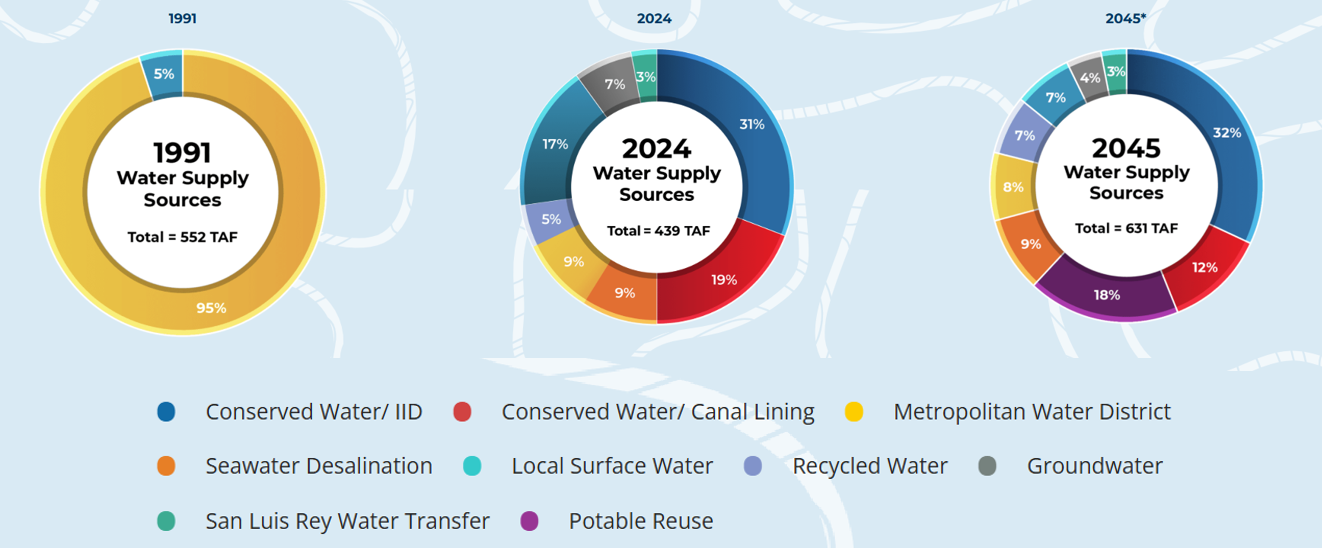The popular WaterSmart Landscape Makeover annual competition is now open for 2025 entries. The contest highlights residential landscaping with grass areas that have been transformed into flourishing and colorful water-smart landscapes.
Contest judges look for winners who represent the best in landscaping makeover projects from 12 participating San Diego County water agencies.
Winning entrants feature unique approaches to their landscape projects. They demonstrate the wide range of options for creating lush, beautiful landscapes that rely more on native plants and less on large areas of thirty grass.

Jason and Taylor McAllister turned a tired Santee yard into a tropical landscape visited by pollinators and other wildlife. Photo: Padre Dam Municipal Water District
Entries are judged on overall attractiveness, efficient irrigation methods, design, and appropriate plant selection and maintenance. The creative results and personal stories help inform and inspire other homeowners to consider their own new yard designs.
“The cooler winter months are the ideal time to make changes to your landscaping,” said Water Authority Senior Water Resources Specialist Debby Dunn. “Take advantage of our ongoing educational programs and rebates to create your own water-wise wonderland.
“To help choose the plants that best fit your style and climate, check out the Water Authority’s Nifty 50 and Happy 100 plant lists. These lists can help everyone create beautiful, lush, colorful, thriving landscapes filled with birds, bees, and butterflies.”
Which Agencies Are Participating In 2025?

Rain barrels help supplement the irrigation system in this year’s Vista Irrigation District Landscape Makeover Contest winner. Photo: Vista Irrigation District
Participating agencies in 2025 include the cities of Escondido, and Oceanside, Helix Water District, Olivenhain Municipal Water District, Otay Water District, Padre Dam Municipal Water District, Rincon Del Diablo Water District, San Dieguito Water District, Sweetwater Authority, Vallecitos Water District, and Vista Irrigation District.
Each agency winner receives a $250 gift certificate and public recognition for their efforts. Homeowners may also be eligible for turf removal rebates and additional incentives, which can help defray project costs. Applications must be complete and approved prior to beginning your landscape work.

The winning Olivenhain Municipal Water District 2024 landscape contest design includes a seating area to let visitors sit and enjoy the space Photo: Olivenhain Municipal Water District
This year’s contest deadline for all participating agencies is Friday, May 9, 2025. Homeowners may submit their entry online or through their participating agency. This is where you pay your water bill. You must be a resident within agency boundaries to participate.
Find the application for your participating water agency here, or on your agency’s website.
WaterSmart Landscaping Saves Estimated 36 Million Gallons Annually

The Palmer family’s winning entry in the 2024 City of Escondido Landscape Makeover Contest. Photo: City of Escondido
Outdoor water use accounts for 62% of San Diego County’s water consumption, mainly for landscape irrigation. Yards with a lot of grass can greatly increase overall water consumption.
Conservation education efforts, including the WaterSmart Landscape Contest, provide ways to create landscapes customized for your favorite activities, incorporating the needs of children, pets, accessible areas, pollinators, and specialty gardens.
Free Landscape Makeover Classes Offered by Water Authority
The Water Authority offers free options to help homeowners plan their makeovers. Homeowners can get started by viewing step-by-step videos on the Water Authority website. Additional online resources includes free video workshops.
Each winner will receive a $250 gift certificate and recognition in the appropriate agency’s newsletter, on their website, and other promotional materials.











